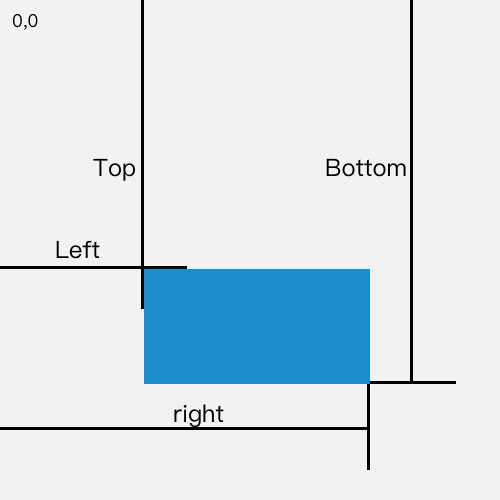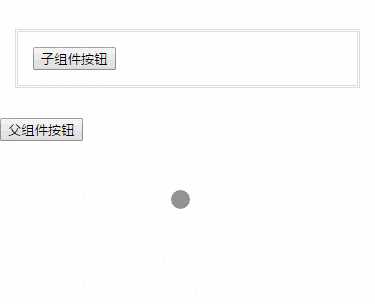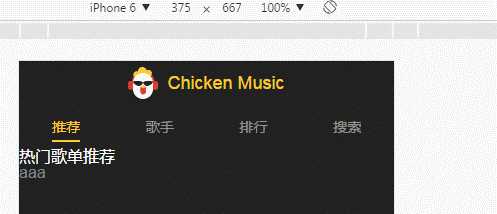标签:100% 计算 滚动 示例 scale 驼峰命名 bottom 显示与隐藏 device
# watch 用法
(1)、普通的watch
<div style="margin-top: 60px;"> {{common}} <button @click="common=‘123456‘">change</button> </div>
data () { return { common: ‘hello world‘ } }, watch: { common (newVal, oldVal) { console.log(`newVal--->${newVal}`) } },
运行:

(2)、对象的属性watch (需要借助 computed 计算属性)
<div style="margin-top: 60px;">
{{common.name}}
<button @click="common.name=‘KobeByrant‘">change</button>
</div>
computed: { name () { return this.common.name } }, watch: { name (newVal, oldVal) { console.log(`newVal--->${newVal}`) } },

# 移动端 1px:
HTML部分:加一个 “border-1px” 类
<div class="container border-1px"></div>
CSS部分:两部分,一部分是通过伪类给定1px 的宽度,另一部分是在不同DPI下缩小一定的倍数
.border-1px{ position: relative; &:after{ position: absolute; bottom: 0; left: 0; display: block; width: 100%; content: ‘‘; border-top: 1px solid $color; } } @media (-webkit-min-device-pixel-ratio: 1.5) { .border-1px{ &::after{ -webkit-transform: scaleY(0.7); -moz-transform: scaleY(0.7); transform: scaleY(0.7); } } } @media (-webkit-min-device-pixel-ratio: 1.0) { .border-1px{ &::after{ -webkit-transform: scaleY(0.5); -moz-transform: scaleY(0.5); transform: scaleY(0.5); } } }
# Element.getBoundingClientRect()
Element.getBoundingClientRect() 方法返回元素的大小及其相对于视口的位置
返回值是一个 DOMRect 对象,该对象包含了一组用于描述边框的只读属性,left、right、top 和 bottom,单位为像素。除了width 和 height 以外的属性都是相对于视口的左上角

当滚动位置发生改变时,top 和 left 属性值会立即随之发生变化,因为它们的值是相对于视口的,不是绝对的。
<div class="bounding bounding-hook" style="width: 100px; height: 100px; margin-left: 15px; background-color: rgb(0,160,220)"></div> let rect = document.getElementsByClassName(‘bounding-hook‘)[0].getBoundingClientRect() console.log(rect)
控制台打印结果:

# ref 属性:
属性值是一个 String,这里要注意一点,属性值必须是一个单词或者驼峰命名法(这点可以自行试验),如果模板中用短横杠命名法,js中用驼峰的话会报错;如果二者都用短横杠,也会报错
如果用在普通的DOM元素上,引用指向的就是DOM元素;如果用在子组件上,引用就指向组件实例
(1)、用在普通的DOM元素上
<template> <div> <p ref="profile"> hello world!</p> <button @click="hello">button</button> <h1 style="font-size: 16px; color: red;">{{str}}</h1> </div> </template>
<script type="text/ecmascript-6"> export default { data () { return { str: ‘‘ } }, methods: { hello () { this.str = this.$refs.profile.innerHTML } } } </script>
运行效果:

可以看到,点击按钮时,通过 " this.$refs.profile" 获取到的是整个 DOM元素 ( <p data-v-04987154> hello world!</p> )
(2)、用在子组件上
父组件:
<template> <div> <child ref="childWrapper"></child> <button @click="get">父组件按钮</button> <h1>{{str}}</h1> </div> </template>
<script type="text/ecmascript-6"> import child from ‘./child‘ export default { components: { child }, data () { return { str: ‘‘ } }, methods: { get () { this.$refs.childWrapper.addNum() this.str = this.$refs.childWrapper.str } } } </script>
子组件:
<template>
<div class="child-wrapper" style="margin:30px 15px; padding: 15px; border: 3px double #ddd;">
<button @click="addNum()">子组件按钮</button>
<div v-show="isShow" style="width: 100px; height: 100px; background-color: red;"></div>
</div>
</template>
<script>
export default {
data () {
return {
isShow: false,
str: ‘我是子组件的数据,你能拿到我吗?‘
}
},
methods: {
addNum () {
this.isShow = !this.isShow
}
}
}
</script>
运行效果:

可以看到,child组件可以通过点击按钮实现红色DIV的显示与隐藏,父组件一样可以通过 " this.$ref.childWrapper" 拿到子组件,并调用获取子组件的数据和方法,对子组件加以控制
关于 ref 注册时间的重要说明:因为 ref 本身是作为渲染结果被创建的,在初始渲染的时候你不能访问它们 - 它们还不存在!$refs 也不是响应式的,因此你不应该试图用它在模板中做数据绑定。
上面的两个例子,都是通过点击事件来实现示例效果,如果我们直接在数据更新的时候通过 ref来访问的话是找不到的,报错未定义,如下图:

<script type="text/ecmascript-6"> import child from ‘./child‘ export default { components: { child }, data () { return { str: ‘‘ } }, created () { // this.get2() this.$nextTick(() => { this.get2() // 我是子组件的数据,你能拿到我吗? }) }, methods: { get2 () { console.log(this.$refs.childWrapper.str) } } } </script>
# 为动画DOM元素添加 transform: translate3d(0,0,0) 开启GPC硬件加速模式,从而让浏览器在渲染动画时,从CPU转向GPU。具体有两篇较好的文章可查阅
http://blog.bingo929.com/transform-translate3d-translatez-transition-gpu-hardware-acceleration.html
http://www.w3cplus.com/animation/animation-performance.html
.cart-decrease{ display: inline-block; padding: 6px; opacity: 1; transform: translate3d(0,0,0); // 开启GPU硬件加速,解决Chrome动画卡顿 .inner{ display: inline-block; line-height: 24px; font-size: 24px; color: rgb(0, 160, 220); transition: all 0.4s linear; transform: rotate(0); } &.move-enter-active, &.move-leave-active{ transition: all 0.4s linear } &.move-enter, &.move-leave-to{ opacity: 0; transform: translate3d(24px, 0, 0); .inner{ transform: rotate(180deg); } } }
# navtive 修饰符
浏览器默认会把 <router-link>渲染成 a 标签,如果需要为 router-link 添加事件,不能像一般 html 元素那样直接写 " @click="someMethod",必须加 .navtive 修饰符
Demo 1:按一般的写法添加事件
<router-link to="/rank" @click="test">aaa</router-link>
test () { alert(1) }

Demo2:用.native 修饰符来添加事件
<router-link to="/rank" @click.native="test">aaa</router-link>

同样,给组件绑定原生事件也必须用 .native 修饰符
<select v-model="optSelected"> <option value="aa">AA</option> <option value="bb">BB</option> </select> <component :is="optSelected" @click="test"></component>
不加的情况下,没法弹出1,并且控制台会有警告消息

现在加上修饰符
<select v-model="optSelected"> <option value="aa">AA</option> <option value="bb">BB</option> </select> <component :is="optSelected" @click.native="test"></component>

标签:100% 计算 滚动 示例 scale 驼峰命名 bottom 显示与隐藏 device
原文地址:http://www.cnblogs.com/rogerwu/p/7777382.html